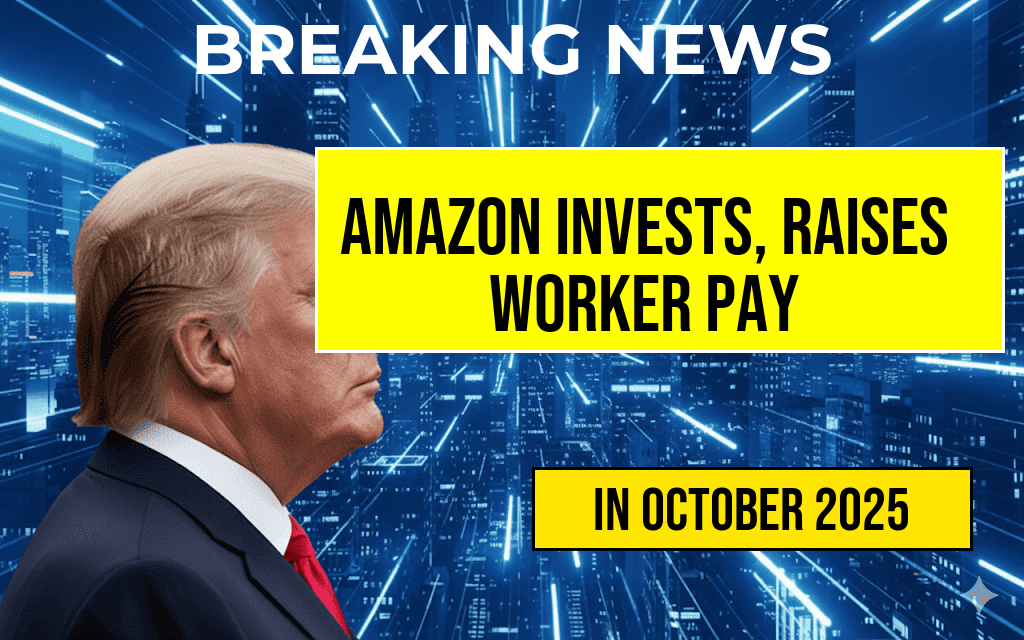Amazon has announced a significant $1 billion investment aimed at increasing wages and improving working conditions for its fulfillment center employees across the United States. This move has led to a notable rise in the average pay for fulfillment workers, pushing it beyond $23 per hour. The investment underscores Amazon’s commitment to addressing labor concerns and enhancing employee compensation amidst ongoing debates about working conditions in the e-commerce giant’s logistics network. The initiative is expected to impact tens of thousands of workers, with the company emphasizing its focus on providing competitive wages, benefits, and career development opportunities. As Amazon continues to expand its logistics footprint, this wage boost may influence industry standards and labor negotiations nationwide.
Details of the Investment and Pay Increase
Scope of the $1 Billion Commitment
- Amazon plans to allocate the $1 billion over the next year primarily towards wage increases, bonuses, and improved benefits for fulfillment workers.
- The investment covers thousands of fulfillment centers, sortation centers, and delivery stations across the country.
- Amazon states that the funding will also support new hiring initiatives and retention incentives designed to address labor shortages in the logistics sector.
Impact on Worker Compensation
| Period | Average Hourly Pay |
|---|---|
| Before Investment | $20.50 |
| After Investment | $23.00 |
According to internal data, the average hourly wage for fulfillment workers has increased by approximately 12% since the announcement, with many facilities reporting starting wages now exceeding $20 per hour, and seasoned employees earning more than $25 per hour in some regions.
Responses from Employees and Industry Experts
Worker Perspectives
Many fulfillment employees have welcomed the wage increase, citing improved financial stability and morale. “It’s a step in the right direction,” said Lisa Carter, a warehouse associate in Ohio. “With the rising cost of living, earning over $23 an hour makes a real difference.” Others acknowledge that while wage hikes are positive, some still face challenges related to workload and shift demands.
Industry and Labor Analysis
Labor analysts note that Amazon’s wage increase sets a new benchmark within the logistics industry. “This move could pressure competitors to elevate their pay scales to attract and retain talent,” explained Dr. Mark Reynolds, a labor economist at the University of California. “It also reflects Amazon’s recognition that competitive wages are essential for operational stability.”
Meanwhile, labor unions and advocacy groups have expressed cautious optimism. “While higher wages are welcome, they must be accompanied by meaningful improvements in working conditions,” stated Jessica Miller, spokesperson for the Warehouse Workers United coalition.
Broader Implications and Industry Trends
Impact on E-Commerce Logistics
Amazon’s wage increase may influence broader industry practices, prompting competitors like Walmart and FedEx to reevaluate their compensation packages. As e-commerce continues to grow, logistics companies face mounting pressure to offer attractive wages and benefits to secure a reliable workforce.
Worker Retention and Recruitment Strategies
- Enhanced wages are expected to reduce turnover rates, which have historically been high in warehouse jobs.
- Amazon’s investment also includes investments in training programs aimed at career advancement within the company.
- Such strategies could serve as models for other logistics firms seeking to stabilize their staffing levels amid labor shortages.
Additional Context and Future Outlook
Amazon’s commitment to improving worker pay aligns with broader societal discussions about fair wages and labor rights in gig and logistics economies. The company’s ongoing efforts may also influence legislative debates around minimum wages and workplace safety standards.
As Amazon continues to expand its fulfillment network, the emphasis on competitive compensation could reshape employment expectations within e-commerce logistics, potentially encouraging more companies to prioritize worker well-being in their operational models.
For further information on Amazon’s labor policies and industry trends, resources such as Wikipedia’s page on e-commerce and Forbes’ coverage of retail industry developments offer valuable insights into the evolving landscape.
Frequently Asked Questions
What is the significance of Amazon’s one billion dollar investment?
Amazon’s one billion dollar investment aims to enhance pay and improve working conditions for fulfillment workers, reflecting the company’s commitment to supporting its workforce and maintaining competitive labor standards.
How has Amazon’s investment impacted worker pay?
Following the investment, the average pay for fulfillment workers has increased to over twenty-three dollars per hour, providing better compensation and financial stability for employees.
What are the potential benefits for Amazon’s customers and business from this investment?
Improving worker pay and working conditions can lead to increased productivity and employee satisfaction, which may result in faster delivery times, higher service quality, and overall better customer experiences.
Are there any new initiatives or improvements planned as part of this investment?
While the article highlights increased pay, Amazon may also implement additional training programs, healthcare benefits, and workplace enhancements to support its fulfillment workforce, though specific initiatives are not detailed.
How does this investment compare to Amazon’s previous efforts to support its workers?
This one billion dollar investment represents a significant step in Amazon’s ongoing efforts to improve wages and working conditions, building on previous initiatives aimed at fostering a better work environment for fulfillment employees.

Leave a Reply